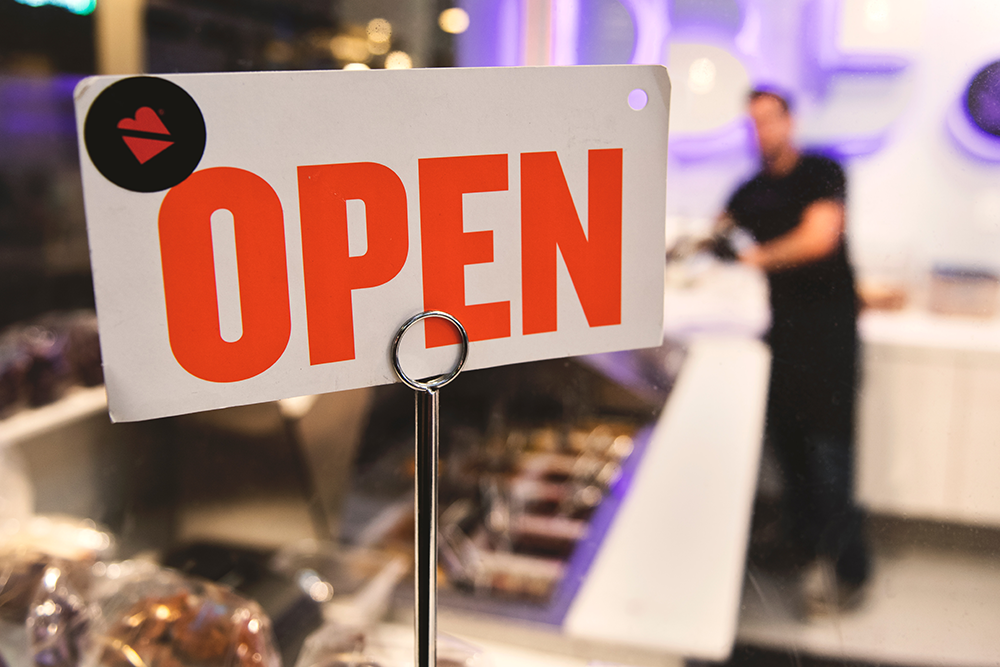The Ultimate Checklist for Opening a Restaurant

So, you’re ready to open a restaurant? Congratulations!
Opening a restaurant is an exciting and challenging endeavor, but with proper planning and execution, it can be a rewarding experience.
In this blog post, we’ll provide you with a checklist to guide you through the essential steps of opening a restaurant, including financing, finding the building/lease, hiring employees, choosing your tech software, setting up your team, and *takes breath*… other important considerations.
Let’s dive in.
1. Financing:
Whether you’re buying an existing restaurant or starting one from scratch, financing is a crucial aspect of your restaurant venture. The financing options differ depending on the approach you choose. Let’s explore the financing considerations for both scenarios.
Buying a Restaurant:
If you plan to acquire an existing restaurant, you can expect to pay a purchase price of 3-5 times the EBITDA (Earnings Before Interest, Taxes, Depreciation, and Amortization). Typically, banks or the Small Business Administration (SBA) can loan you up to 80% of the purchase price, and the rest can be covered through personal cash or a seller loan.
To secure financing for acquiring a restaurant, consider the following factors:
- Cash Flow: The restaurant you’re acquiring should have healthy cash flow management.
- Sales Trajectory: The financial records should indicate positive sales trends or growth.
- Experience: The bank will evaluate your expertise and experience in running a restaurant.
- Assets and Collateral: Banks require collateral, such as personal guarantees and equity in assets, to secure the loan.
- Credit Score and Personal Debt: A good credit score (over 700) is essential, and excessive personal debt may impact the loan approval.
Opening a Restaurant:
When starting a restaurant from scratch, the financing requirements differ significantly. In addition to securing capital for various expenses, you’ll need ample working capital to cover costs during the initial phase. Consider the following financing aspects:
- Fixed Costs: Calculate the expenses for rent, employees, chefs, and utilities before generating sales.
- Testing of Recipes: Allocate funds for recipe development, ingredient costs, and product testing.
- Equipment: Budget for purchasing all the necessary kitchen and restaurant equipment.
- Space Improvements: If you’re renovating an existing space or building, factor in the costs of improvements.
Since banks are generally reluctant to lend to unproven restaurant concepts, many restaurant owners choose to self-fund or seek investors for their first venture. It’s common to pay for the building and fit-out out of pocket and secure a bank loan for equipment purchases, as equipment holds collateral value.
We wrote an entire blog post on restaurant financing which you can read in full here.

2. Finding the Building/Lease:
The location of your restaurant is a critical factor in its success. Consider the following when searching for a suitable building or lease:
Location: Look for a location with high foot traffic, proximity to target customers, and suitable demographics.
- Space: Ensure the space is adequate for your restaurant concept, including seating capacity, kitchen size, storage areas, and restrooms.
- Lease Terms: Review the lease agreement carefully, including rent, lease duration, renewal options, and any additional costs or restrictions.

3. Hiring Employees:
Your restaurant’s success relies heavily on the skills and dedication of your employees. Follow these steps when hiring your team:
- Determine Staffing Needs: Identify the positions you’ll need, such as chefs, servers, bartenders, hosts, and kitchen staff.
- Recruitment: Advertise job openings through online platforms, local newspapers, or networking within the industry.
- Interview and Selection: Conduct interviews and carefully assess candidates’ qualifications, experience, and fit with your restaurant’s culture.
- Training: Provide comprehensive training to ensure consistency in service, food preparation, and safety standards.
4. Choose Your Tech Software
Utilizing the right technology software can streamline operations and improve efficiency. Consider the following tech software options for your restaurant:
- Point of Sale (POS) System: Select a reliable POS system to handle orders, payments, and inventory management.
- Accounting Software: Consider using accounting software like Xero and MarginEdge to track expenses, revenues, and financial reports.
- Reservation Management: Implement a reservation management system to efficiently handle table bookings and customer preferences.
- Online Ordering and Delivery Platforms: Explore options for integrating online ordering and delivery platforms to expand your customer reach.
5. Getting Your Team of Experts Set Up:
To ensure legal and financial compliance, set up a reliable team of professionals to support your restaurant operations. Consider the following:
- Accountant: Hire an experienced restaurant accountant who can provide guidance on financial matters, tax obligations, and cost management.
- Legal Team: Consult with a lawyer specializing in the restaurant industry to handle legal matters, such as permits, licenses, contracts, and employment laws.
- Insurance Provider: Work with an insurance provider to secure the necessary coverage, including general liability, workers’ compensation, and property insurance.
6. Additional Considerations:
While the above points cover the core aspects of opening a restaurant, don’t overlook these additional considerations:
- Menu Development: Create a well-curated menu that aligns with your restaurant concept, target audience, and available ingredients.
- Supply Chain Management: Establish relationships with reliable suppliers to ensure a steady flow of high-quality ingredients and products.
- Marketing and Branding: Develop a marketing strategy to promote your restaurant, build brand awareness, and attract customers.
- Permits and Licenses: Research and obtain the required permits and licenses, such as food service permits, liquor licenses, and health department certifications.
- Health and Safety: Implement robust health and safety protocols to comply with regulations and ensure a clean and safe environment for staff and customers.
Need More Help With Your Restaurant Opening?
In conclusion, opening a restaurant requires careful planning and consideration of various factors, including financing, location, staffing, technology, legal compliance, and more.
By following this checklist and seeking expert advice when needed, you’ll be off to a really good start.
If you’d like additional support in opening your restaurant, we’re here to help.
You can book a complimentary call with one of our restaurant accountants by using our online form here.
Remember, the restaurant industry can be highly competitive, so differentiate yourself by offering exceptional service, quality food, and a unique dining experience.
Best of luck with your new restaurant venture!



